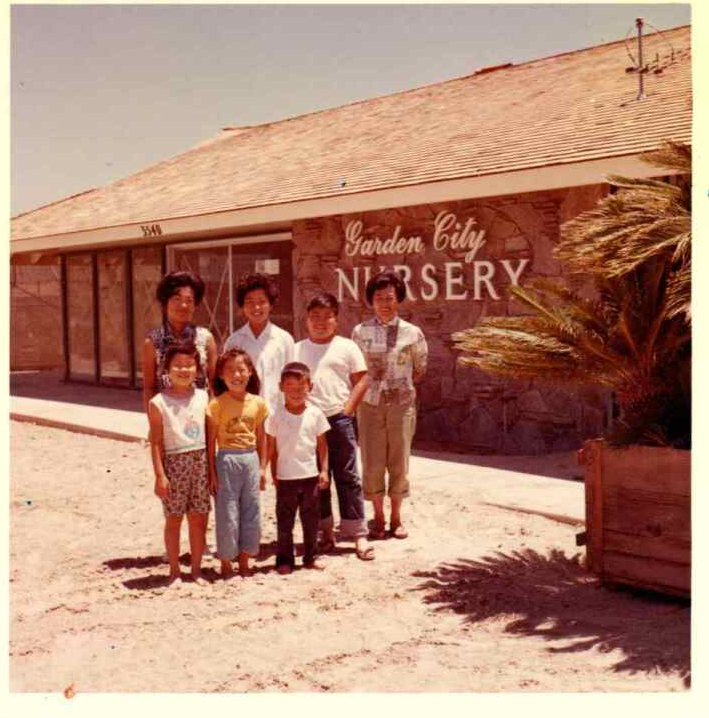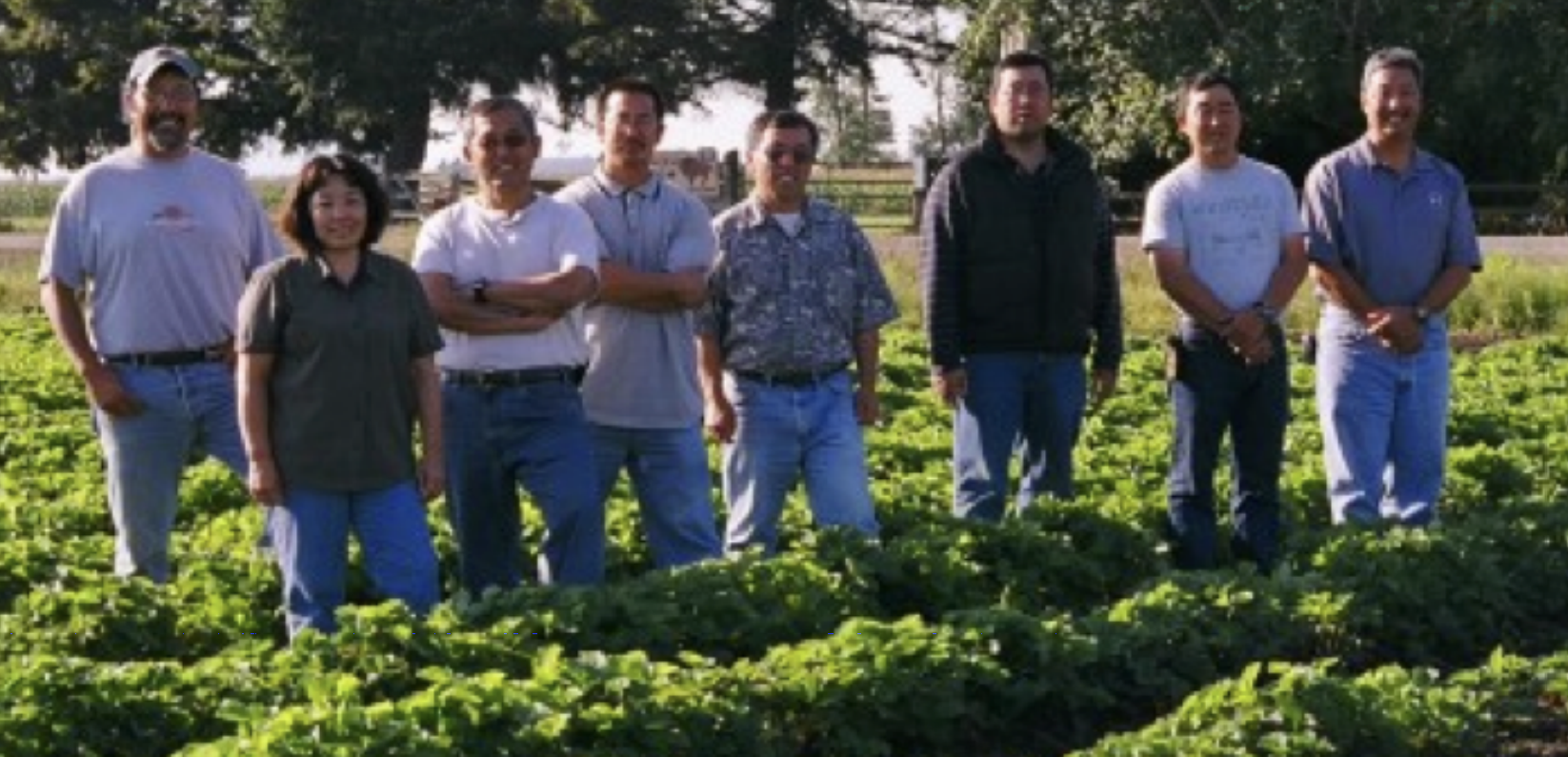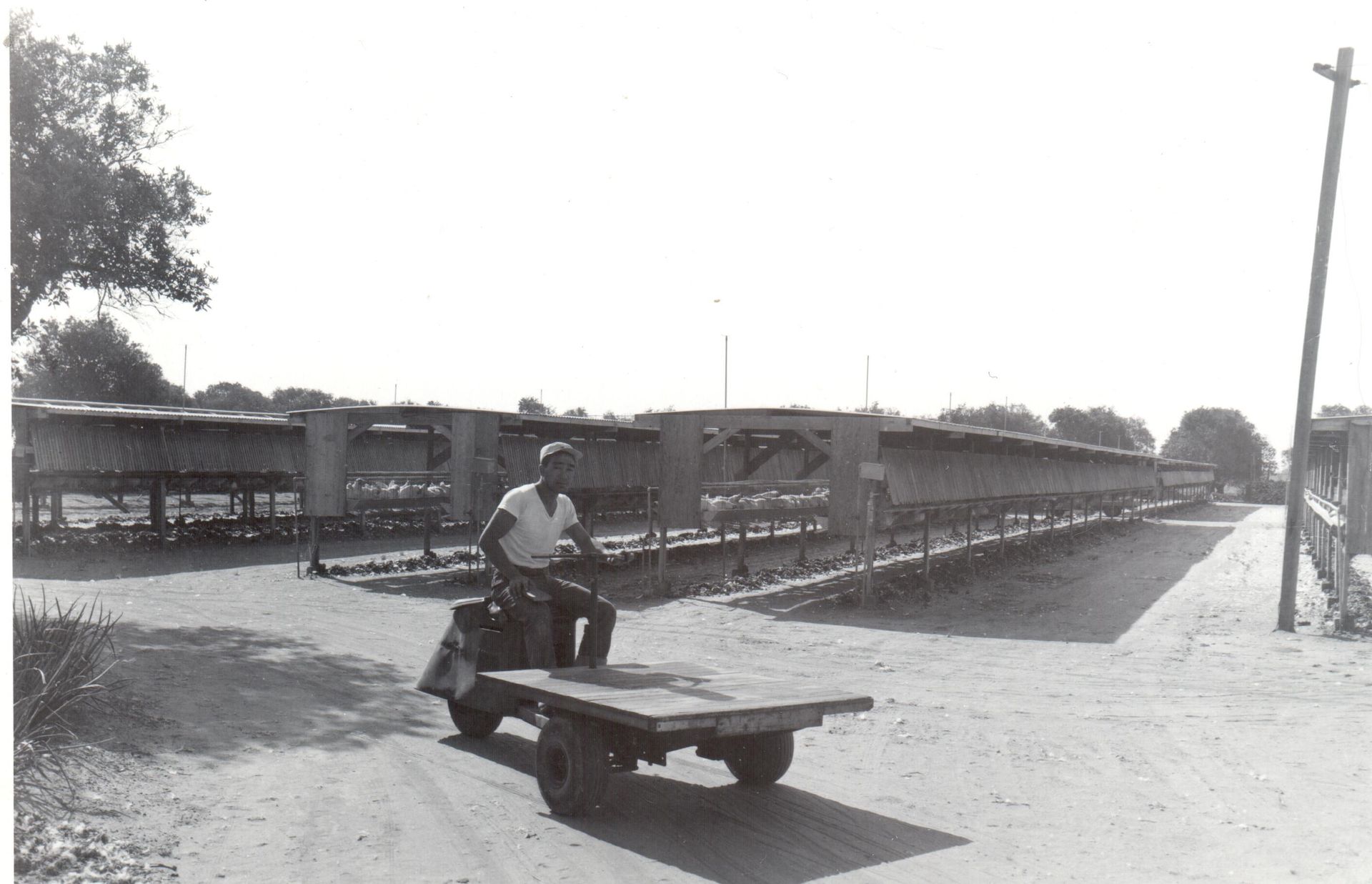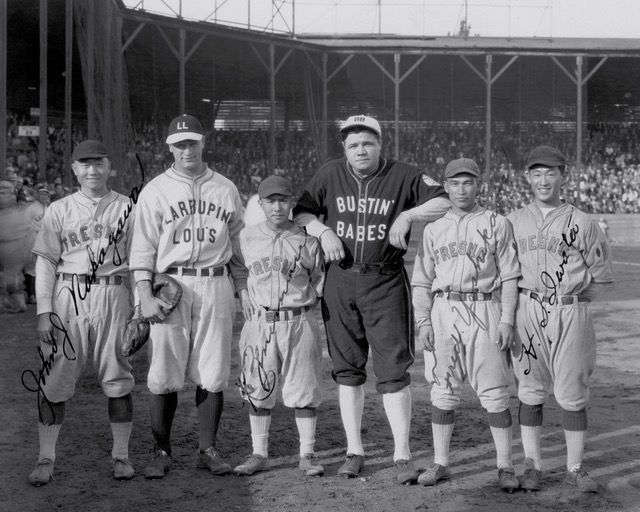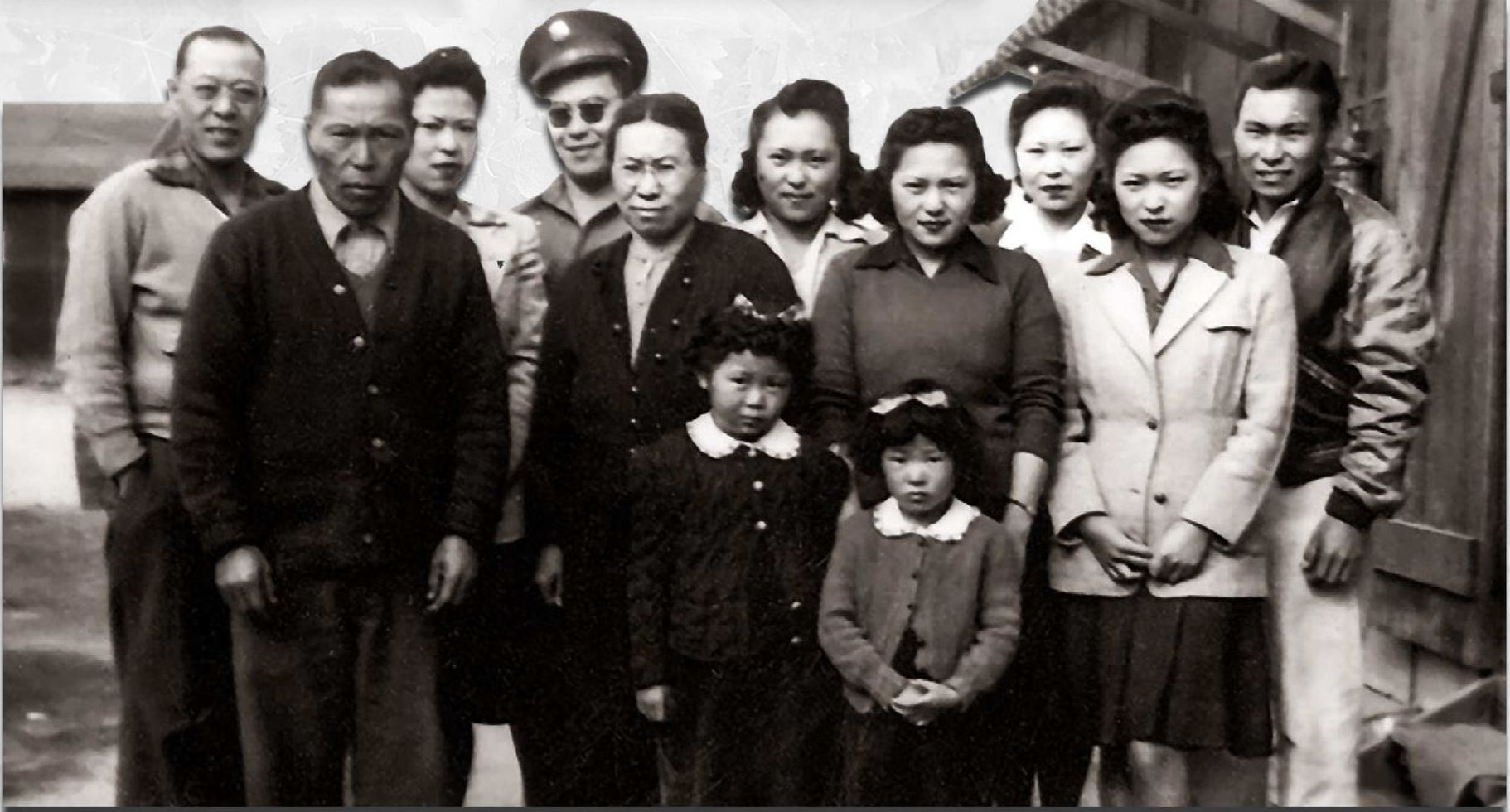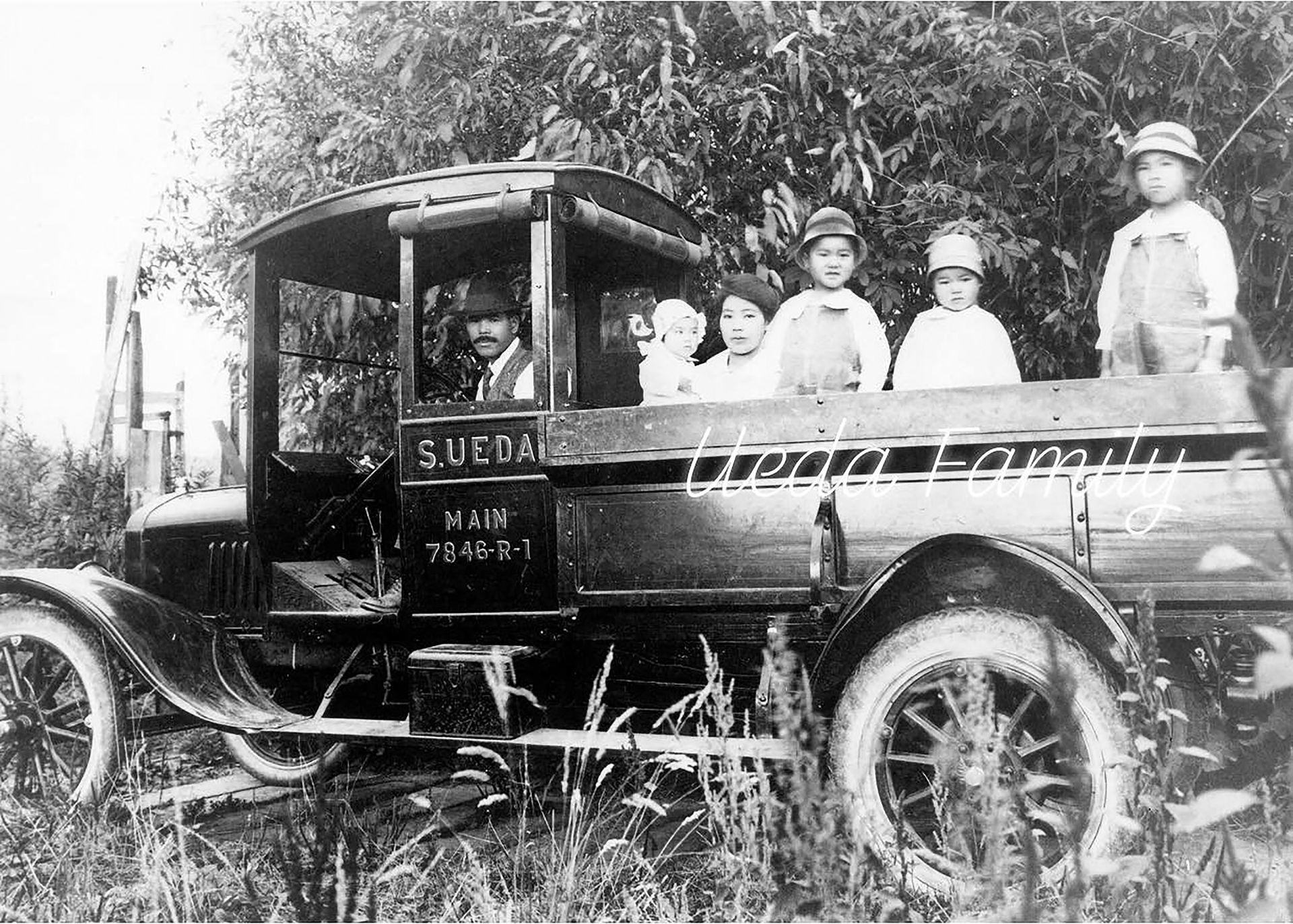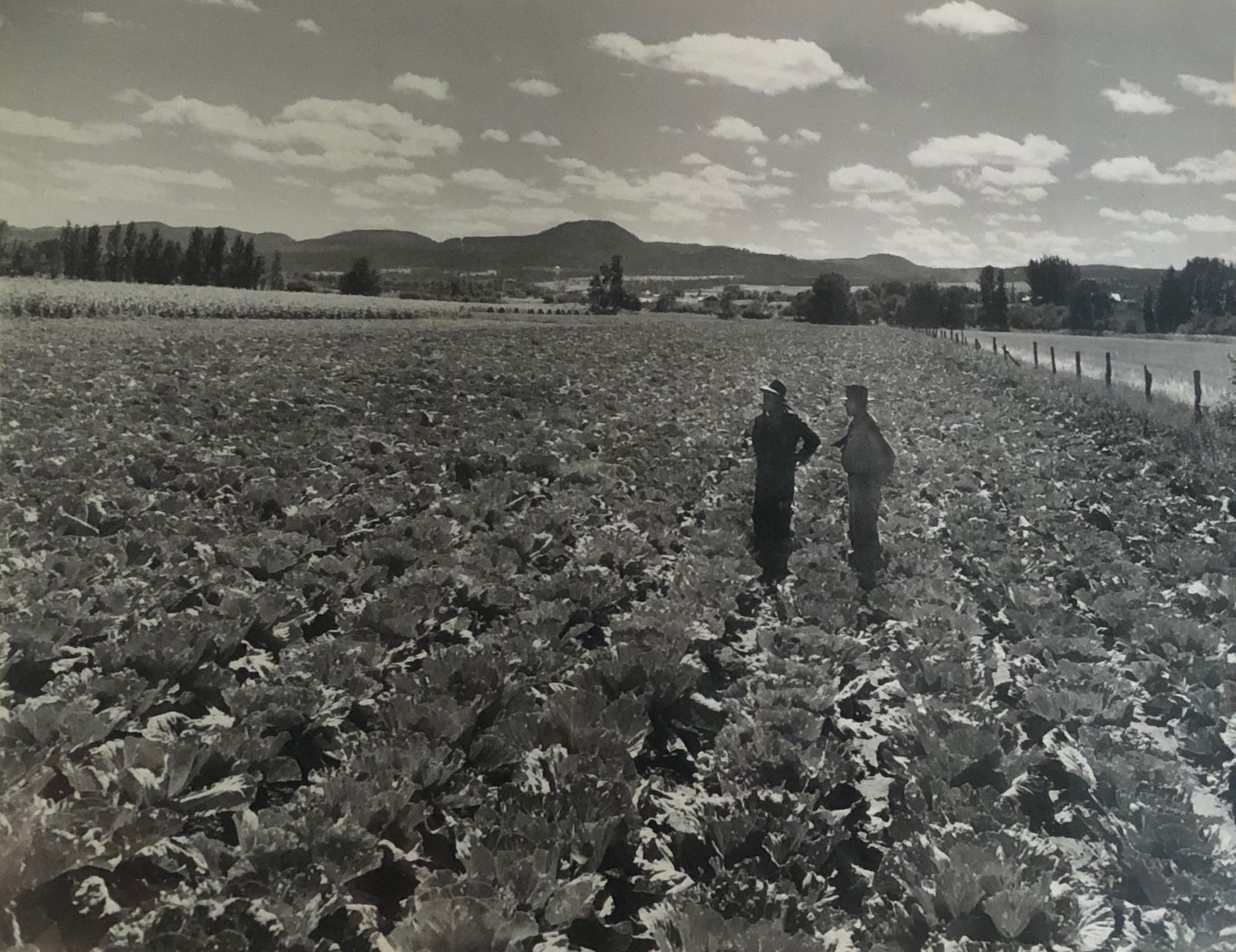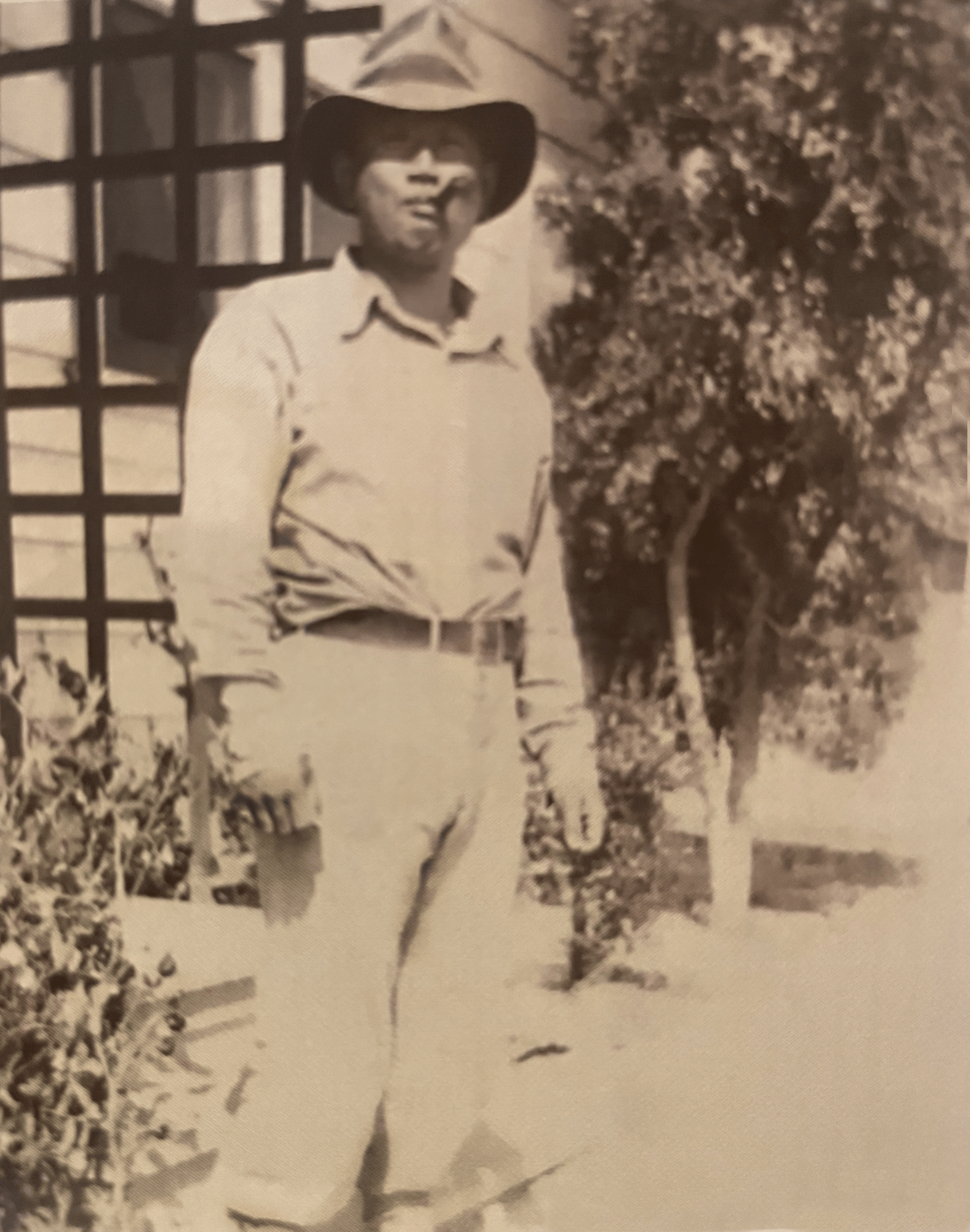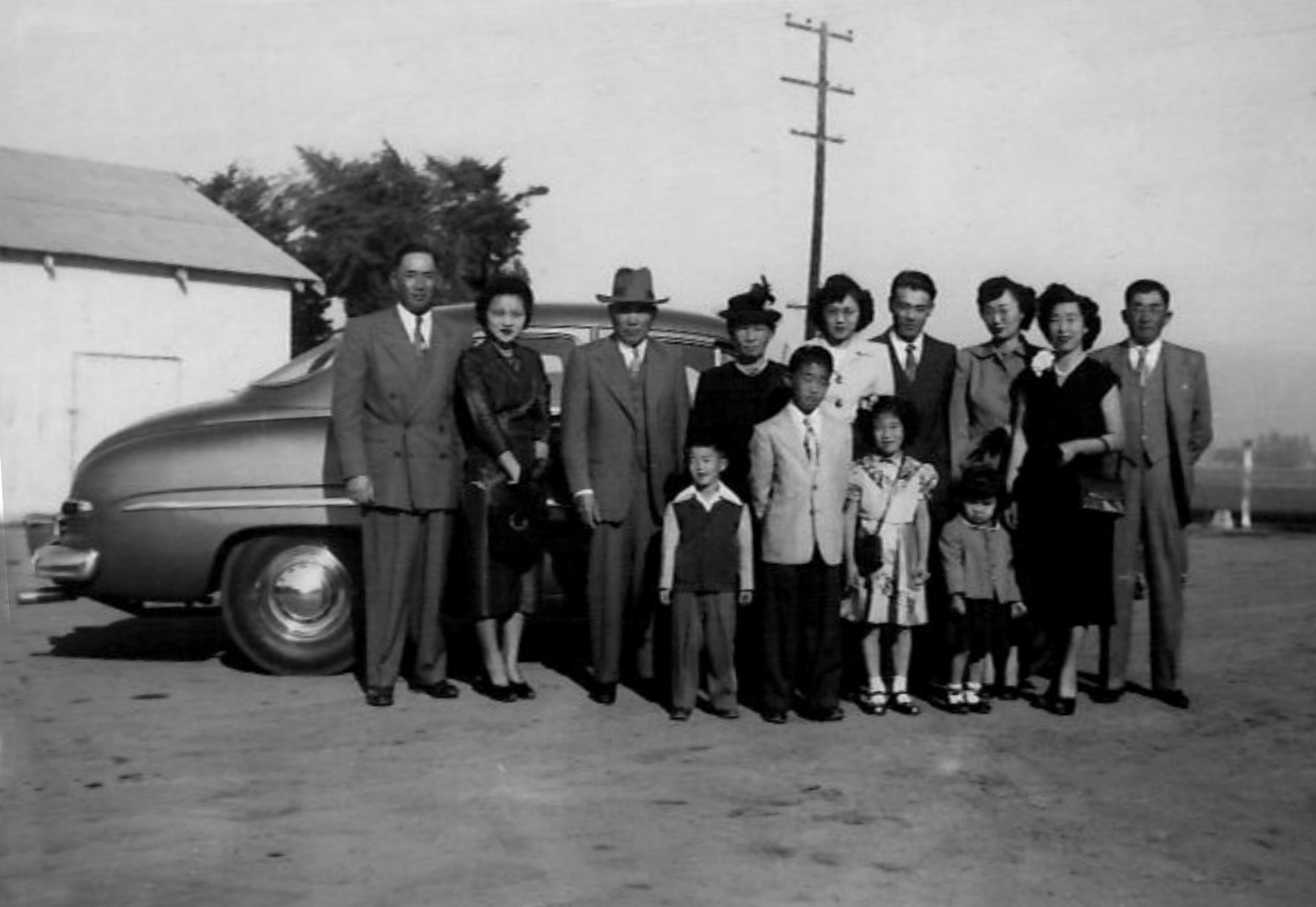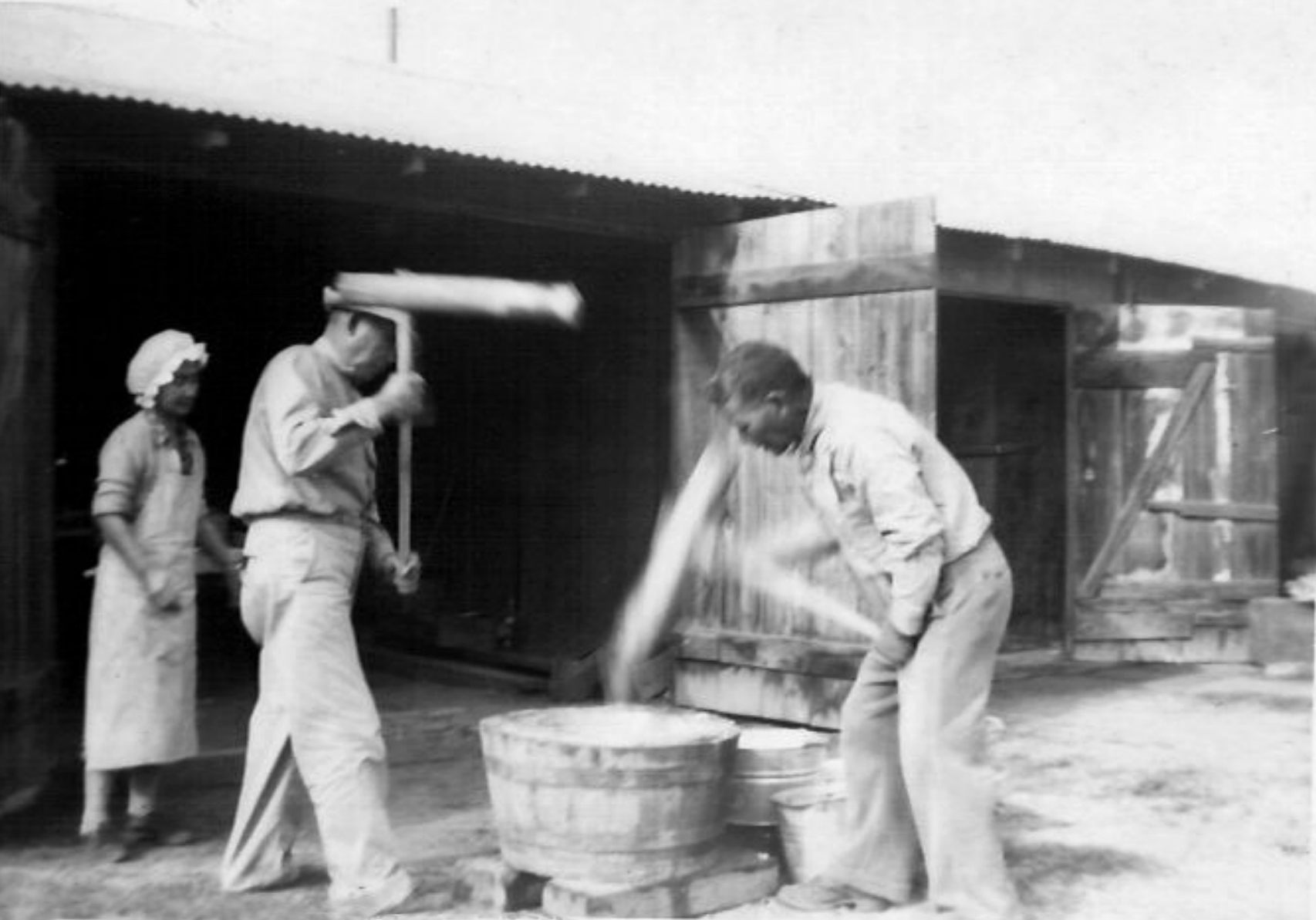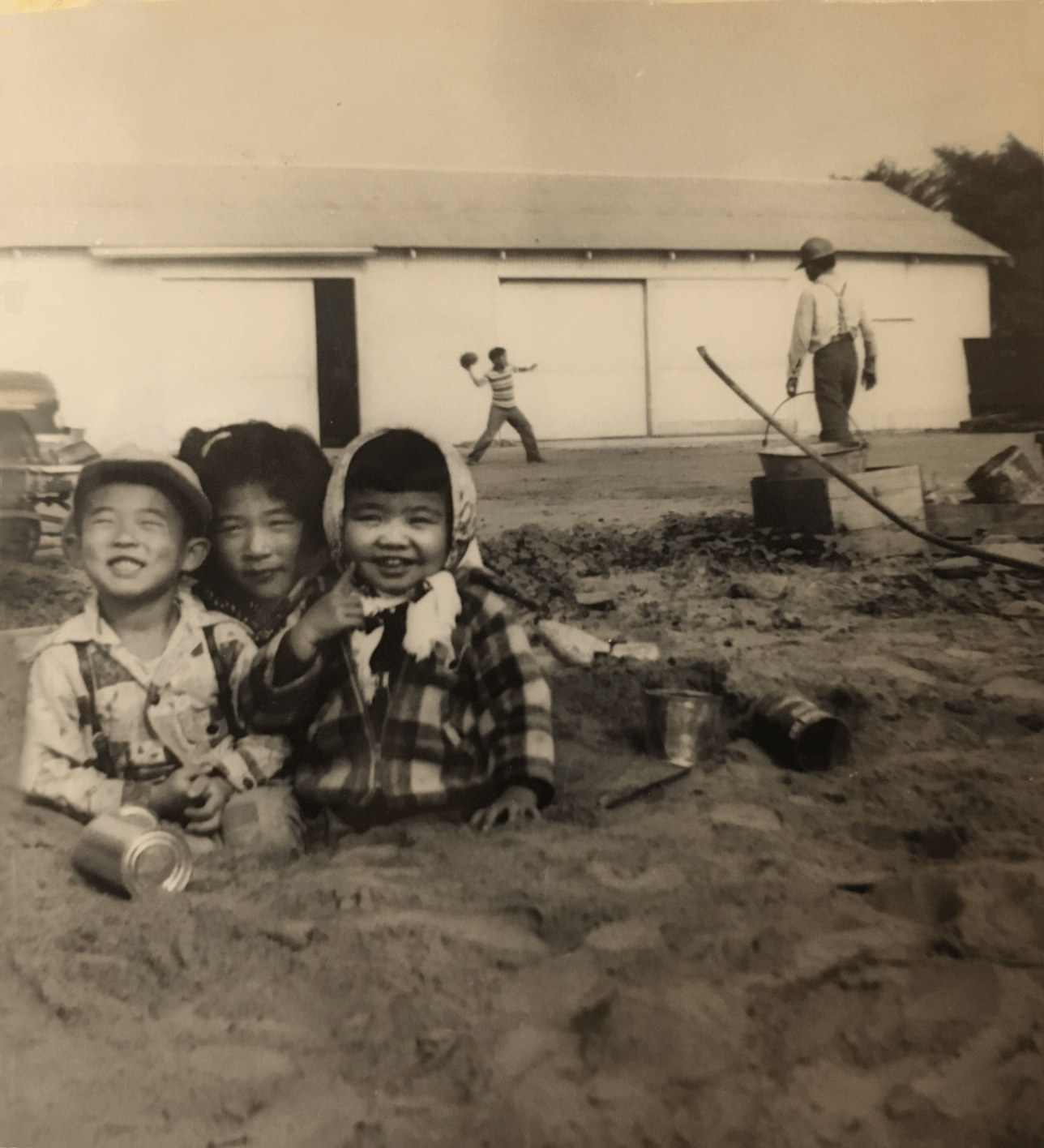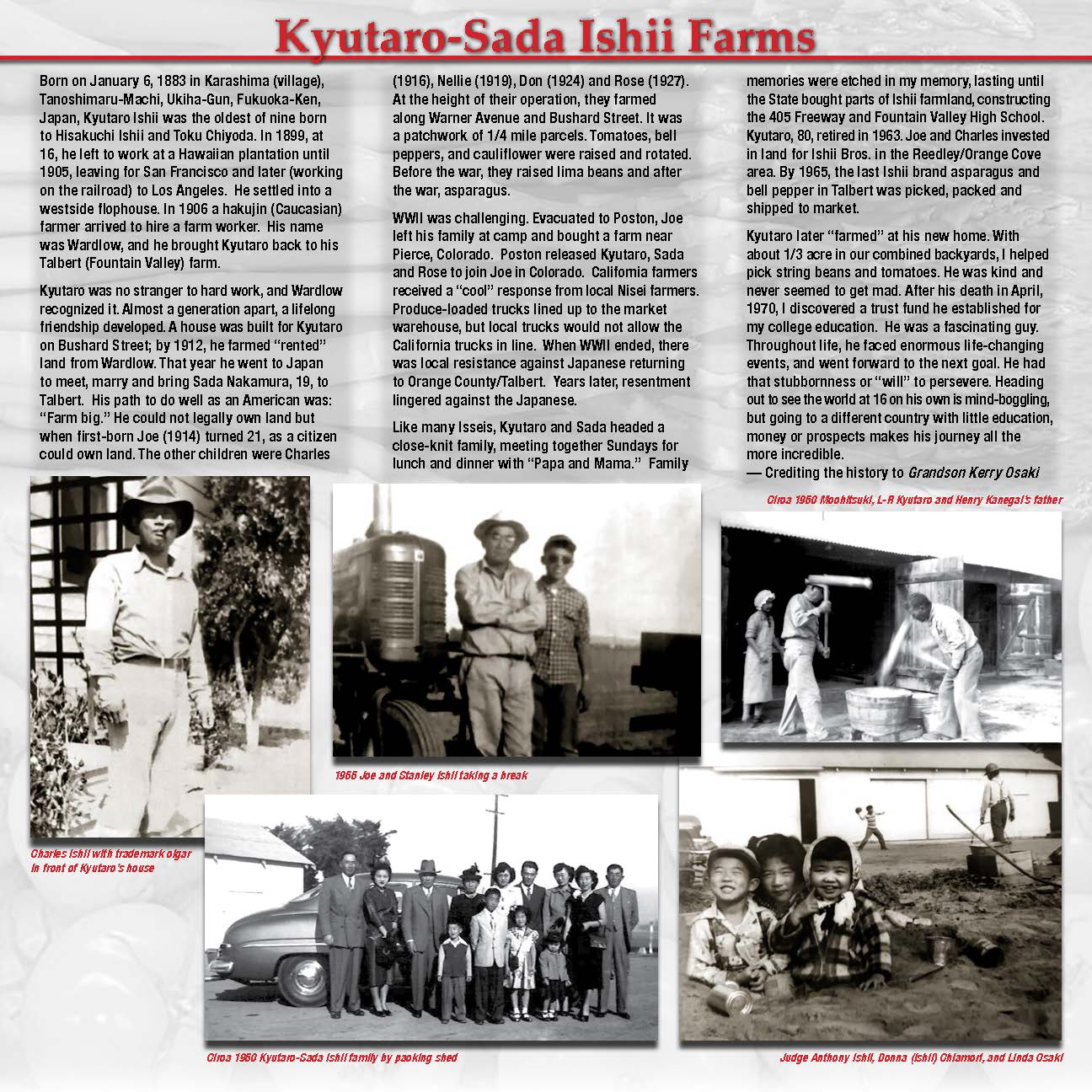Ishii Farms
Born on January 6, 1883 in Karashima (Village) Tanoshimaru-Machi, Ukiha-Gun, Fukuoka-Ken, Japan, Kyutaro Ishii was the oldest of 9 children born to Hisakuchi Ishii and Toku Chiyoda. In 1899, at the age of 16 and with his father’s help, he booked passage to Hawaii where he worked on a plantation on Oahu until 1905, at which time he was able to afford passage to San Francisco and complete his journey to America. From there, he made his way to Los Angeles (working on the railroad) where he settled into a flophouse on the west side. One day, in 1906, a hakujin farmer from Orange County showed up at the flophouse looking to hire a farm worker. His name was Wardlow. He spoke with Kyutaro and whether it was a word or his body language, there was something that Wardlow liked and as fate would have it, he took a chance and brought Kyutaro back to his farm in Talbert, CA.
Kyutaro was no stranger to hard work, and Wardlow recognized it. Almost a generation apart in age, they developed a strong friendship that would last for the rest of their lives. Soon, they built a house for Kyutaro (at what later became 17271 Bushard Street) and by 1912, he was “renting” land from Wardlow to farm for himself. It was also 1912 when he went back to Japan to meet, marry and bring back a wife to Talbert. Her name was Sada Nakamura and she was 19 years old. He saw a path on how he could do well in America as a farmer. Farm big. By law, he could not own the land but with the birth of his first born, Joe, in 1914, he foresaw that he could rent the land until Joe turned 21 and then Joe as a citizen could start owning land. Over the next few years, the rest of the children came along: Charles (in 1916), Nellie (in 1919), Don (in 1924) and Rose (in 1927). Eventually, at the height of their operation, they farmed along Warner Avenue (from Brookhurst to Newland) and along Bushard Street (from Talbert Avenue to Edinger Street except for the Wardlow farm and another farm). It was not a continuous block of land but a quilt-like patchwork of roughly 1/4 mile parcels disconnected by other farms. Generally, from an aerial view, Wardlow’s farm was to the south, Fulton’s farm was to the southwest, Plavan’s farm (while he was there) was on the north side of Warner while the Masuda’s, the Neishi’s and the Hara’s farms abutted the Ishii Farm on the east side facing Brookhurst. The crops they raised were many (tomatoes, bell peppers, cauliflower) and rotated but principally, before the war, they raised lima beans and after the war, it was asparagus.
The greatest challenge was WWII. A few months after the war broke out, the family was evacuated to the Poston Camp. The initial hardship was the suspension of the farm operation. They turned to their friends, the Wardlows, and the latter agreed to take of the farm. Charles (Master Sergeant) was serving in the Army with the 522nd Field Artillery Battalion attached to the 442 nd Regimental Combat Team. Nellie got a job in the Poston offices as a typist. Rose, at 15, made the interesting comment that she never had a sense that things were bad. In Camp, she was glad to see her friends were living close by and she got to see them every day. For her, it was like going to summer camp albeit an armed and dusty one. After about a year, both Nellie and Joe (and his family) were able to leave the camp for Chicago (Nellie) and Colorado (Joe). Once Joe got settled in and bought a farm near Pierce, Colorado, he was able to get Kyutaro, Sada and Rose released from Poston and brought them to Colorado. One of things that Joe spoke of was the “cool” reception that CA farmers like himself received from the local nisei farmers. Like when they brought their truck to the market warehouse, trucks would line up and take turns unloading their produce. But when a CA farm truck approached the line, the other local trucks would not allow them in.
When WWII ended, there was local resistence against the Japanese returning back to Orange County/Talbert. It is difficult now to gauge just how bad it was in those days right after the war had ended but the “hate” was widespread. Kyutaro’s attorney, John Rutan, Sr., founder of the OC law firm of Rutan and Tucker that still operates today, was an old friend of Kyutaro’s dating back to the 1920's. After listening to Kyutaro’s description of the tense climate, Rutan contacted the US War Relocation Authority and supported the idea of sending General Joseph “Vinegar” Stilwell to the Masuda farm to award the Distinguished Service Cross to the family of the late war hero, Kazuo Masuda, They made a big show of it on December 9, 1945 with the General riding in, flags flying, hundreds of people present and an Army motorcade roaring into the small farm town. Stilwell reportedly had to “order” the local civilian leaders to be there. President Reagan, then a young captain, acted as the emcee for the ceremony. Joe recalled that later that night, the Masuda house was shot up by gunfire presumably from locals who did not agree with the Federal Government. No one was hurt nor arrests made but for the moment, the Masuda’s moved out for their safety. Even a couple years later, the resentment still lingered against the Japanese. Masae Ishii (Joe’s wife and a Secretary/Member of the School Board) attended Board meetings held at night in Santa Ana but one of the Wardlows always accompanied her to make sure she was safe from local bigots. As Charles, Stanley (Joe’s son) and Joe Ishii related in recalling the details of this story, the local agitation against the return of the Japanese in Talbert was real and only grudgingly dissipated over time.
Notwithstanding the climate, the real post war story starts out with the kindness that the Wardlow family did for the Ishii’s during WW2 when they kept Kyutaro’s farm intact and when they gave it back to him at war’s end. His friendship with Wardlow was a remarkable thing. Different country, race, language and generation, but the two managed to carve out a friendship that lasted for decades. When white-haired Wardlow would come over with presents, a 5-year old Rose would blurt out “Grandpa!” Despite the land that he owned elsewhere, Kyutaro lived in the same house that was built in 1912 on the Wardlow farm. In the early 60's when the developers were looking to buy the land on which the farm house sat, Nellie Durall (Wardlow’s daughter) explained that before he died, Wardlow made her promise that Kyutaro could live there for as long as he wanted and she was not to sell it. Charles realized the situation, spoke with Kyutaro and the latter agreed that the land should be sold but he would buy a house in the new housing development so that he could remain on the same land.
Kyutaro and Sada were like many Isseis of that time: A strong, close-knit family that met every Sunday at the farm to have lunch and dinner together with “Papa and Mama”. Whether it was going bowling, playing cards, flying kites in the fields or just climbing and hiding on every tree or roof in the compound, it is etched in my memory as an incredibly fun time. It lasted until the State started to buy up the land (including chunks of the Ishii farm land) as a prelude to the construction of the 405 freeway and the new Fountain Valley High School. Sensing the end was near, and at 80 years old, Kyutaro retired in 1963. He had been slowing down for a few years and both Joe and Charles had taken charge, investing in commercial buildings in OC and then buying land for Ishii Bros. in the Reedley/Orange Cove area. It took a couple of years, but by 1965, the last asparagus and bell pepper under the Ishii brand in Talbert was picked, packed and shipped to market.
Although it was just his back yard, Kyutaro spent his remaining years “farming” at his new home. We lived next door so they never put in a boundary wall and both yards were big lots. As a result, he had about a 1/3 acre to farm in our combined back yards. I would help him pick his string beans and tomatoes, and at the end of the day, sit there on the bench next to him. Sometimes, he would grab a tomato, wash it off, pull out a salt shaker and start eating it like an apple. I would be eating my “pay for the day” which was an ice cream soda. He was kind and never seemed to get mad. When I was 15, he started asking me what I wanted to do as an adult. College was a given but he liked the idea of a doctor in the family. I thought that the law was something I might want to do but I knew it would be really expensive. He told me to keep studying and not to worry about the other part. He died not long afterwards on April 9, 1970. Later, I found out that he had set up a trust fund and it was those monies that helped pay my way through college and law school. He was a fascinating guy. Throughout his life, he faced enormous life changing events and every time, he would step back, move around and then go forward to the next goal. He had that stubbornness or “will” to persevere, to keep moving forward. Heading out to see the world at the age of 16 on your own is mind-boggling but to go to a different country with very little education, money or prospects only makes it all the more an incredible journey.
Charles Ishii with trademark cigar in front of Kyutaro's house
circa 1950 Kyutaro-Sada Ishii family by packing shed
circa 1950 Mochitsuki, L-R Kyutaro and Henry Kanegai's father
1955 Joe and Stanley Ishii taking a break
Judge Anthony Ishii, Donna (Ishii) Chiamori, and Linda Osaki
